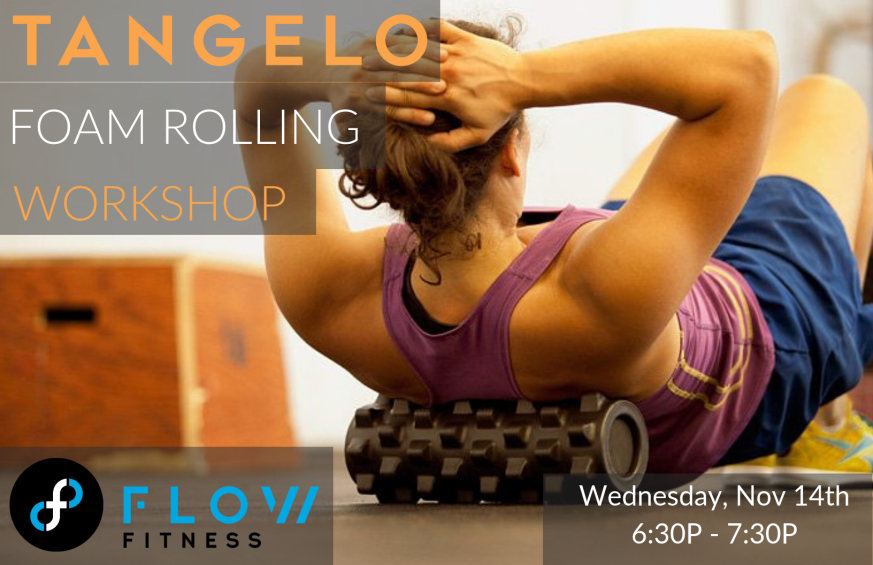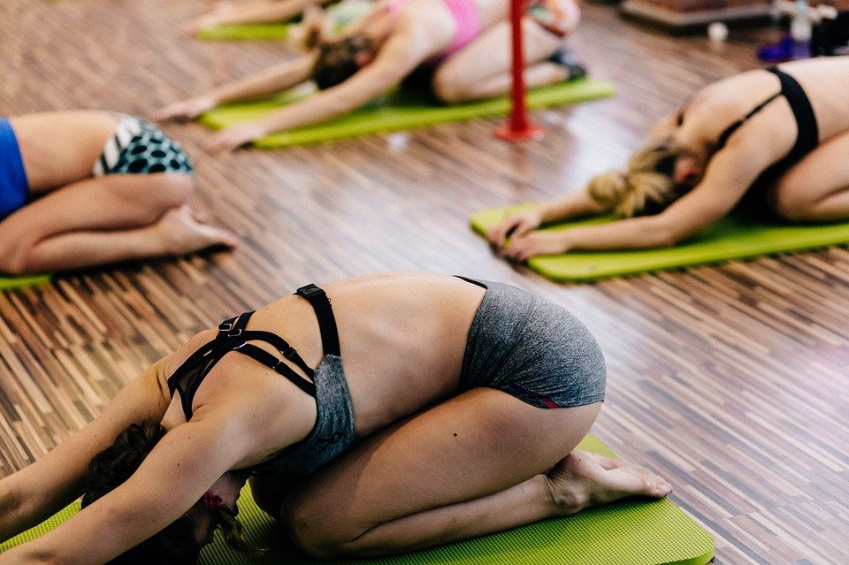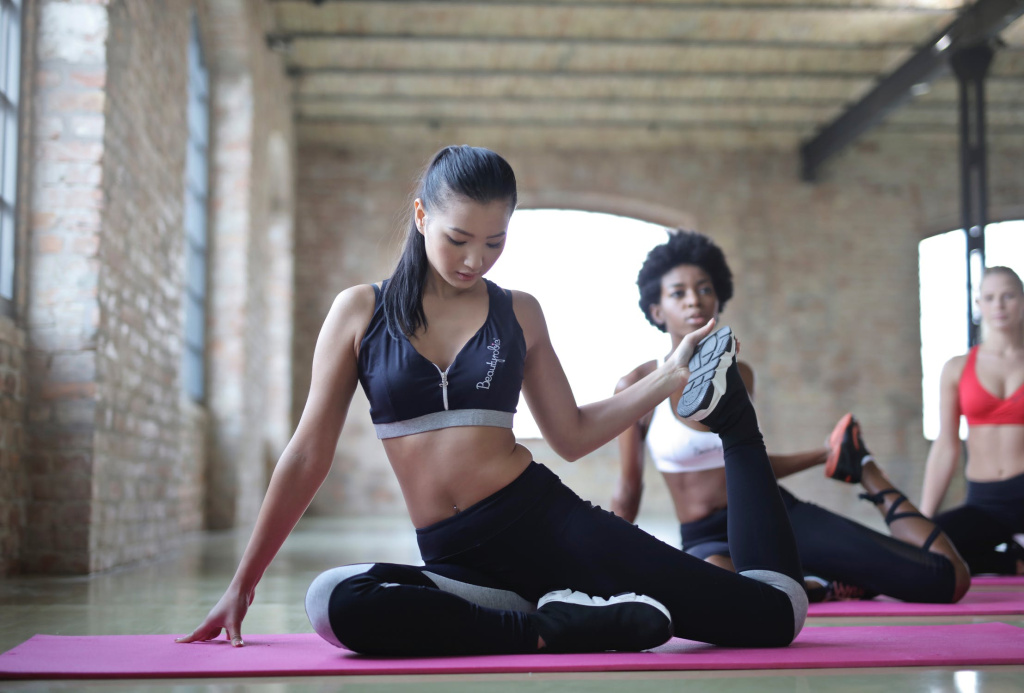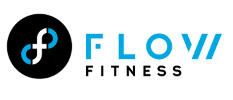Fremont One Year Anniversary Party!
Join us at Flow Fremont to celebrate our one-year anniversary.
Bring a guest for FREE! (call ahead to reserve a spot for your guest in class).
Some of what we have in store for you….
The Flowathalon: Transition through our most popular classes in one workout: Sweat to the beat in Cycle, Move and groove in Barre, Build a better you in Team Conditioning, Breathe and Flow in Yoga, then sprint to the finish line where a cold beverage of your choice awaits.
Sign up online to participate – space is limited!
Themed Classes: Barre: Early 2000’s Pulse at 5:15pm, Rock n’ Roll Yoga Flow at 5:45pm, and Celebration Cycle at 6:15pm
Foam Rolling by Tangelo: The most overlooked component of injury prevention and continual progress is soft-tissue quality. Roll out your muscles, treat day-to-day stiffness, recover, and loosen things up with this Foam Rolling and Release workshop. Sign up online to participate – space is limited!
Nutrition Consults with Alexandra Kulick, Integrative Nutrition Health Coach Reserve your spot here.
Samples by Rebbl, Custom Smoothie, RX Bar and more
Storm the Studio by Athleta ~ receive a coupon for in-store discounts!
 CategoriesEvent
CategoriesEventFoam Rolling Workshop with Tangleo ~ Wednesday, November 14th
Join Tangelo at Flow SLU on Wednesday, November 14th from 6:30-7:30pm in the main studio for a foam rolling workshop.
Body Combat for Breast Cancer ~ Tuesday, October 30th at 6:30pm
Join in the fight against breast cancer. Punch, kick and move your way through Body Combat as well as donate to a good cause.
Bring a guest for free with a $15 cash donation, or donate online and bring in your receipt.
Exercise, AND make a difference. Now that’s a one-two punch!
Seven Gym Mistakes to Avoid
By Flow Coach, Mackennon Klink, B.S, CSCS, Pn1
As you begin to move more, you will make many mistakes on your journey. And you know what? Good. This is totally normal. Every mistake you can possible make hasbeen done a thousand times before. However, ifwedon’t learn from our past or history, we are doomed to repeat those same mistakes over and over. To make progress, there are mistakes that can easily be avoided. Let’s bring to light a few common gym mistakes that will derail your training and bring your gains to a halt.
- Not Using a Training Log
“What gets measured, gets managed.”Peter Drucker
This is a cardinal sin within the gym. How do you know if you are making progress if you are unsure what you did last week orat which weight? To make continuous progress, write your workouts down. Track your weights, reps, sets, and even how you’re feeling pre/post workout. Stop making this cardinal mistake. Write down your damn workout!
2) Working out without a Goal or Vision
Not planning your workouts in advance (also known as programming) always leads to mediocre results because there is no direction or focus. Regularly strolling into the gym and then using whatever machine and/or weights are available will usually lead to a less than stellar workout and not be an efficient use of your most valuable asset. TIME! Plan and know what each workout will consist of, so you can be mentally prepared and take the guess work out of the equation.
3) Program Hopping
Ignore the latest fitness trend or fad. Discard the “flashy” exercises and stick to the essential movement patterns: hip hinge, squat, lunge, push, pull, and carries. Just because you saw an exercise on Instagram doesn’t mean you should do it. As a rule, you should stay on the same program anywhere between 6-12 weeks before changing it up. Stay on course, be patient, be consistent, and you will get great results.
4) Ignoring Progressive Overload
To improve mobility, increase strength, and make gains in your overall conditioning, you must force change. You need to push your body to work harder than it is used to, otherwise it will not adapt. Progressive overload is the most basic training principle and goes hand in hand with using a training log (See # 1). Your training should be challenging yet allow enough recovery between workouts, so you can continue to increase your level of intensity.
5) Resting too much (or too little)
Rest periods are integral and have a huge influence on overall progress. Unfortunately, most people don’t know if they are spending either 45 seconds or 5 minutes between sets. To build strength, you’ll need to“earn your rest”by feeling stimulated, not annihilated while being specific to your goals. We recommended having a stop watch with you while you train. Here are some guidelines to determining rest periods based on your goals :
- 0 – 30 seconds for circuit and metabolic conditioning •30 seconds – 2 minutes for muscle building (hypertrophy)
- 2 – 3 minutes for strength training
- 3 – 5 minutes for power training
- 5 – 10 minutes for maximal intensity strength and/or power training
6) Sacrificing technique for Weights
While it is important to track your weights, beat personal records and add weight to the bar, it is more important to improve the quality of each rep. Focus on perfecting technique and mastering mechanics. If unsure, go to one of our Strength Camps sessions or hire a personal trainer.
7) Doing Everything at Once
No one can completely overhaul their life overnight. You cannot go from 0 to 100 with your fitness aspirations without causing a complete burnout. Instead, take one small step. Do something more than you were yesterday.
This is not the end all, be all list of gym mistakes. There are hundreds of thousands of different mistakes individuals make within the gym, both beginners and veterans. However, the biggest difference between beginners and veterans are beginners are discouraged by their mistakes, while the veterans use their previous experience and the wisdom of other coaches to get better. Within the fitness world, there is very little black and white, only shades of grey.
 CategoriesEvent
CategoriesEvent#thelast100days: BINGO
HAVE YOU SET YOUR INTENTION?
If so, excellent! Be sure to post it on the intention wall. If not, here are some ideas. Take a moment, and set a goal or write an intention.
Kicking off the challenge: Move More. No matter your intention, moving your body will get the juices flowing…and Flow has the answer for you. Beginning October 1st, we play bingo.
Each horizontal row you complete gets one entry into the raffle.
Each diagonal row gets 5 entries, and a black out gets 25 entries.
If you black out one card, begin another!
Check us out and post on Social Media if you like: Facebook and Instagram. The more you participate, the better. Don’t forget: #thelast100days. Let’s do this!
Finish this year with intention.
 CategoriesEvent
CategoriesEvent#thelast100days
September 23rd marks the last 100 days of 2018.
Take a moment, and think back to January 1st. Did you set any goals for the year? Make any resolutions? If so, how are they coming along?
Chances are, there are at least a couple of those resolutions or goals that you haven’t gotten around to. That you’ve let slip. And time is running out.
As of today, you have 100 days until 2019. Instead of throwing up your hands, and waiting for the new year to roll around to start again, we invite you to end 2018 strong – resolutions or not.
What will you say as we ring in 2019?
Join Flow and #thelast100days Challenge.
As we begin, we invite you to set an intention.
This could be a specific goal, or simply an intention for how you want to end this year.
What’s still on your list that you’d like to achieve?
(start a blog, lose 10 lbs, take dance classes, begin a meditation or yoga practice, do a handstand)
or…
How would you like to finish 2018? What would you like to say about the year’s end?
Take some time, and set an intention/pick a goal for the next three months.
– Grab a postcard from the front desk. Write it down, and turn it in. We’ll post your card on our intention wall.
For the next 100 days, each month will have a theme, and activities to go along with it.
October: Move More.
November: Be Well.
December: Renew You.
Kicking off the challenge: Move More. No matter your intention, moving your body will get the juices flowing…and Flow has the answer for you. Beginning October 1st, we play bingo.
- Grab a bingo card from the front desk. Write your name on it, and place it in the box (alphabetized by last name).
- Before each class you take, grab your card, and have the instructor sticker it at the end of class. (return card to the front desk, and we’ll put it back in the box)
Each horizontal row you complete gets one entry into the raffle.
Each diagonal row gets 5 entries, and a black out gets 25 entries.
Grand prize is $250 gift card to Amazon.
Second prize wins a swag bag.
Third prize wins a recommended book (be sure to check social media for all sorts of books, moves and more).
Stay tuned for more details each month. We’ll send information in our regular emails – as well as on Social Media: Facebook and Instagram. The more you participate, the better. Don’t forget: #thelast100days. Let’s do this!
Finish this year with intention.
 CategoriesBlog
CategoriesBlogYin Yoga vs. Yoga Flow vs. Power Yoga: What’s the Difference?
The history of yoga dates back over 5,000 years, originating in India with deeply spiritual and philosophical roots. What we see as yoga today is a conglomerate of thousands of ideas, texts, and teachers and the evolution of practices from around the world. Practicing yoga has been proven to assist with flexibility, strength, balance, and mental health, with approximately 20 million Americans participating each year. It may seem like yoga styles are all basically the same, but in reality more than a hundred different schools of yoga exist. Read up on the three main yoga styles that Flow Fitness offers, and decide for yourself which one seems right for your needs.
Image via Pixabay
Yin Yoga
Founded in the 1970s by Taoist yoga teacher Paulie Zink and based off of centuries-old techniques practiced in China and Taiwan, this style has twenty main poses, but can sometimes expand to upwards of forty. Yin yoga is a slow-paced practice that encourages holding postures for five, ten, or sometimes even up to twenty minutes. These positions are most beneficial when you relax your muscles into the pose, deepening the stretch and finding your balance. Yin yoga’s main focus is calming the mind, reducing stress, and entering the mentality of focused meditation. The movements target the body’s connective tissues in order to regulate the body’s flow of energy and promote balance and flexibility. Yin yoga is oftentimes an excellent choice for athletes and other individuals with physically active lifestyles. It also is an effective way to work through anxiety, trauma, addiction, and emotional issues because of its focus on meditation and stillness.
Flow Fitness has recently added yin yoga to our Fremont studio’s weekly class offering!
Yin Yoga – Deep Stretch with Jenelle is offered weekly on Sundays from 5:30pm to 6:30 p.m.
Yoga Flow
Also known as “Vinyasa” yoga, this style is referred to as “flow” because of how smoothly the poses run together. Yoga flow classes are one of the most popular modern styles of yoga, and you can find them at almost any studio. Classes do not have set poses, giving each teacher the unique ability to personalize their practice, sometimes moving quickly through positions, and other times maintaining a slower, steadier pace. Regardless of preference, all yoga flow instructors know that this style of practice focuses on breath synchronization. Movements between positions are matched with inhalation and exhalation, making the class an almost choreographed experience. Oftentimes yoga flow sessions are held in studios heated to around 80 or 90 degrees, which is warm enough to relax muscles, increase flexibility, and provoke detoxification (but not as hot as Bikram yoga, which is usually practiced at a steamy 104 degrees). Yoga flow welcomes all levels of experience, and encourages going at your own pace and making modifications to fit your needs. Resting in child’s pose is always an option if at anytime you need a break.
Flow Fitness has several yoga flow classes at both our Fremont studio and our South Lake Union studio.

Image via Pexels
Power Yoga
This particular type of yoga was popularized in the 1990s and marked the start of yoga being perceived as a physically intense workout rather than a purely meditative practice. It was adapted from the Ashtanga school of yoga in order to be more accessible to Western students, with less rigidity in regards to poses and more of an opportunity for instructors to personalize their class. Power yoga goes through a sequence of poses dependent on the teacher, with a quick pace and rhythm between postures. Rather than focusing on stillness and meditation, it places importance on the body and movement. Power yoga is good for strength training because the number of planks and sun salutations you go through requires you to constantly be lifting and holding your own bodyweight. Studios can also be heated like a yoga flow class based on the instructor’s preference, but either way, in power yoga muscles warm up quickly, and each position helps develop strength, alignment, and flexibility.
Flow Fitness has power yoga classes available at our Fremont studio on Mondays, Wednesdays, and Fridays from 6 to 7 a.m. with Asia and Natalie.
Try out all three types and figure out your best yoga fit, but always remember to listen to your body and take time to rest. Whether you’re looking for a yoga practice that helps you destress after a long workday and calm your nerves, or wanting a more intense cardio workout, come visit the Fremont or SLU Flow Fitness center so we can help you find the class that best suits your needs.
 CategoriesEvent
CategoriesEventFit 3D Body Scans at SLU
Discover what your body needs in 35 seconds
Get the data you need to properly assess your body’s health.
Flow Fitness will be offering Fit3D body scans at our SLU location the week of September 24th. Scans will be offered both to Members and Non-Members. All scans include:
– Online account to access your data
– 15 minute review of your data and consult with a personal trainer
Member price is $29.99 and will be charged to your account when registering. Sign up here.
Non-member price is $39.99 and must register by calling the front desk at (206) 621-7246 or in person.
Five Warm-up Tips to Boost Performance & Avoid Injuries
Getting hurt sucks! We exercise to lose weight, build muscle, feel better, and improve quality of life. However, it is tough to do any of these while sidelined with an injury. Though it is next to impossible to prevent ALL injuries, there are steps that we can take to reduce the likelihood and, in the process, increase results. One of the most important and often overlooked of these steps is properly warming up prior to activity.
To set the record straight, hopping on the elliptical/treadmill for 10-15 minutes to “get a good sweat” before heading to the more intense part of your training is an unproductive way to warm-up. If this sounds familiar, don’t worry. Flow Fitness has you covered with these 5 tips to help you prepare your body efficiently and effectively!
- Don’t Static Stretch – Prior to most physical activities you want your nervous system to be “excited” which in turn will lead to better recruitment and activation of muscles. To achieve this, any ‘stretches’ that you do must be dynamic in nature. For example, instead of sitting and holding a straight leg hamstring stretch for 1-2 minutes, do walking (or skipping) leg swings, which not only improve hamstring and hip flexor range of motion, but also gets the body ready for the more intense parts of your workout while increasing core temperature and heart rate.
- Be Multi-directional – Most activities require movements in different planes. This is one of the major reasons that hopping on a bike or treadmill is an inefficient way to warm-up as you are only working in one direction. Instead try to incorporate dynamic side to side (shuffles), diagonal (medicine ball chops), front to back (lunges), and rotational (hip twist) movements.
- Activate ‘Sleepy’ Muscles – Warm-ups are much more than just getting sweaty. It is also necessary to prime the muscles that will be active during most of your workout. For example, if you plan to do squats and lunges which relies heavily on the glute muscles (which have been inactive during 8 + hours of desk work), then it would be wise to include exercise such as clam shells and glute bridges to ensure your body performs optimally. So always think about what exercises you are doing and what muscles you need to be “awake” to ensure success.
- Groove the movement – Along the same lines of muscle activation, it is also important to take the body through a “less intense” version of the movements in your workout to fine tune the mechanics. If you are doing a large compound exercise such as the overhead press, always do 1-2 warm up sets with very light weight prior and then another 2 workup sets with a slightly heavier weight, before diving into your more intense working sets. These sets will help reinforce proper form and address any areas that may need additional activation or range of motion.
- Be Mindful of Time – Though important, your warm up should be between 6-15 minutes in duration and not consume your whole workout. However, you can always add mobility and activation drills in between sets of an exercise. For example, band pull aparts following 8 reps of bench pressing can keep shoulders mobile and primed for another set.
Properly warming up prior to working out is the most important thing you can do. The truth is this: If you do not have the time to warm up, then you do not have time to work out. Warm ups can keep your joints healthy, increase range of motion, help prevent injury and improve performance. So, incorporate these 5 warm-up tips into your training plan and see how far you will progress!

